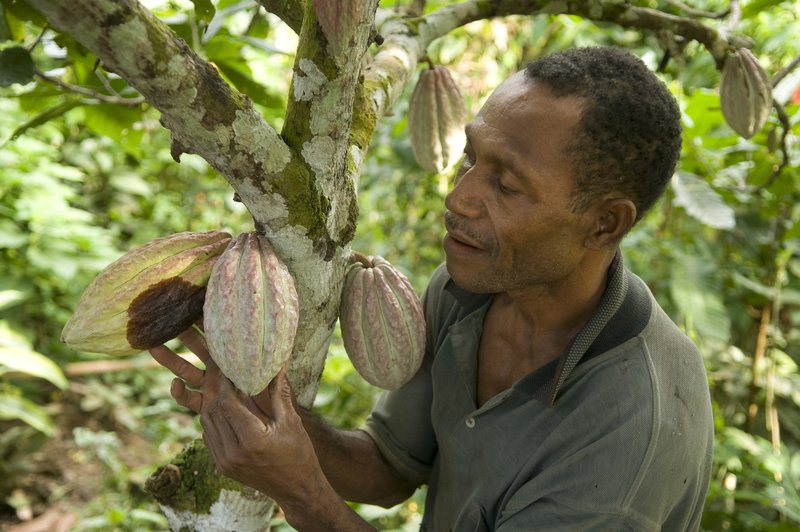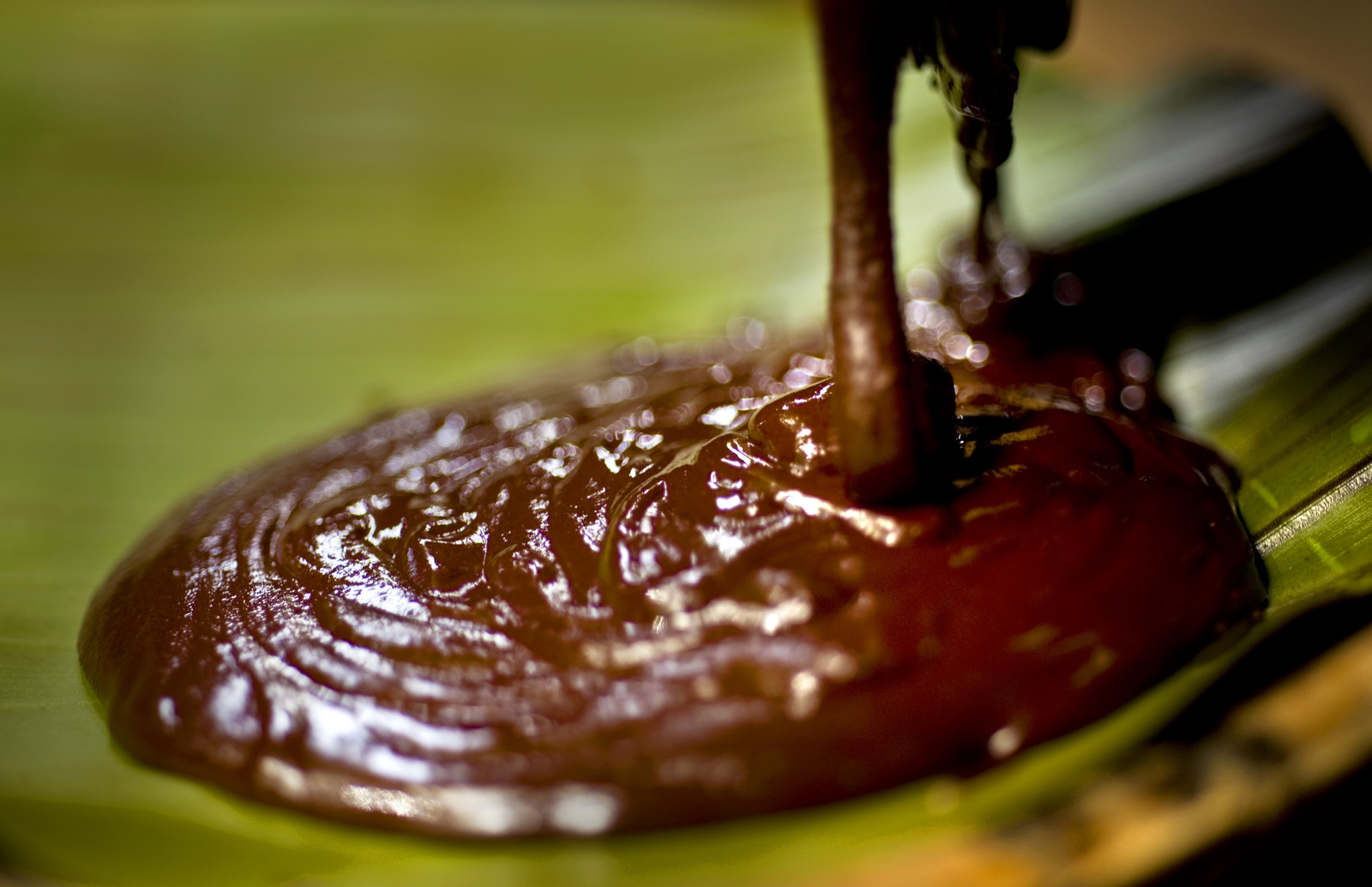
Chocolate is big business. Over $100billion in global consumption and the metric ton of cocoa selling, at time of writing, at £1,897 on commodities markets. But at the center of chocolate is cocoa, a controversial crop and economic backbone of West African countries of Ghana and Côte d’Ivoire.
Chocolate is big business. Over $100billion in global consumption and the metric ton of cocoa selling, at time of writing, at £1,897 on commodities markets. But at the center of chocolate is cocoa, a controversial crop and economic backbone of West African countries of Ghana and Côte d’Ivoire.
By Shari Ankomah-Graham
Chocolate is big business. Over $100billion in global consumption and the metric ton of cocoa selling, at time of writing, at £1,897 on commodities markets. But at the center of chocolate is cocoa, a controversial crop and economic backbone of West African countries of Ghana and Côte d’Ivoire.
Cocoa’s controversy, in a similar fashion to gold, stems from its contribution to deforestation and the presence of about 2 million children working in cocoa farms. But with approximately 800,000 cocoa farmers in Ghana alone dependent on the plant for their subsistence, the question of how to ensure this crop fulfills its economic potential while preserving tropical forests, ecosystems and protecting communities and human rights becomes a key one to answer.
Questions about the sustainability of cocoa have intensified as the environmental impact impact of palm oil, soy and rubber plantations have made international headlines. having a direct impact in climate change and dramatic deforestation are being held on international levels. As a result, Africa’s most prolific cocoa producers, Ghana and Côte d’Ivoire have agreed to move faster with efforts to end deforestation in the cocoa supply chain by signing a Cocoa Sector Collective statement of intent in March 2017.
Part of the Cocoa and Forest Initiative (CFI) which was initiated by the World Cocoa Foundation, the Sustainable Trade Initiative and Prince of Wales’ International Sustainability Unit, embodies joint solutions taken to tackle deforestation. Jonas Mva Mva, Program Director for Cocoa at the Sustainable Trade Institute detailed the CFI was built around three key steps of conservation, sustainable production and engagement of communities. These would ensure forests would not be encroached through transforming the available lands into agro-forestry and constantly engaging with communities living in the forests. “Cocoa is so crucial and people need to remember it used to be in the forests” Mva Mva adds. He lamented “We have entered a vicious circle of deforestation to grow sun cocoa trees which then affects rainfall which in turn affects the growth of cocoa trees” genuinely wishing Ghana and Côte d’Ivoire could achieve through the CFI “the protection, sustainable production and inclusion” of cocoa and smallholders.
Monitoring progress of the CFI would be done through transparent satellite-based monitoring system which would provide deforestation alerts.

Using Climate-Smart Agriculture
Climate-smart agriculture has been another option presented. Defined by the Food and Agriculture Organisation (FAO) as “agriculture that sustainably increases productivity, enhances resilience (adaptation), reduces/removes green house gas (mitigation) where possible, and enhances achievement of national food security and development goals”. According to Glen Hurowitz, CEO of Mighty Earth, Côte d’Ivoire has lost 90% of its forests with 40% of cocoa plantations found in national parks. Many farmers would justify this as a means to sustain their livelihoods but he encouraged a stronger stance to curb deforestation by for example implementing a joint moratorium on illegal cocoa as Brazil had successfully reduced deforestation caused by illegal soy production in 2006 thanks to strong collaborations between corporations and environmental groups. Hurowitz is one of the hopeful in achieving zero deforestation by 2020 such a solution is implemented.
One climate-smart practice would consist in replanting a diversity of trees in cocoa plantations with a focus on shade trees. In fact, farmers have been popularly practicing shade-free sun exposed cocoa to increase yields and cutting off shade trees, but this greatly deforested and affected rainfalls. Growing back shade trees and a variety of leafage near cocoa trees will encourage carbon stock and significantly increase tree coverage. Climate-smart cocoa would also consist in replacing aging trees and improving the existing tree stock – referred to as renovation and rehabilitation. 27 companies have so far signed the CFI and agreed to implement these option with their smallholder partners.

Complications remain
An agripreneur reveals the cocoa industry has considered several steps to make the industry sustainable: the first one being tracability followed by certification and professionalisation with most recently a focus on forests. But he seriously questions the impact of all these steps, asking if cocoa been easier to trace, or if certification really helped farmers and consumers make wiser choices with the main interrogation focused on farmers resilience. Out of 800,000 smallholders, only 10,000 farmers went through the professionalisation but groups like Solidaridad have also developed a youth incubation program supported by MasterCard Foundation and hope to build a more productive and sustainable sector.
Cocoa has been criticized for its wide use of child labour and effective management of supply chain risk would curtail the rights violation. Christopher Stewart, CSO of Olam is one of those encouraging for genuine governmental support of smallholder farmers to ensure targets are met. Cocoa companies need to genuinely support responsible sourcing across entire supply base and can do so through jurisdictional initiatives.
Stakeholders such as the World Cocoa Foundation and Solidaridad have wondered what could be done differently and initiatives such as climate-smart cocoa, international dialogues and innovative sourcing could be parts of the solution. A common response has been that such efforts must be collective which also involves solid funding for optimal implementation. Poverty amongst farmers will continue to influence practices around cocoa production irrespective of agreements requiring support beyond words and with genuine credit facilitation and capacity building.
Cocoa has had to reinvent itself in an era where forests could totally disappear and where enlightened customers can make or break companies. At the end of the day, the biggest influence might be chocolate consumers themselves.